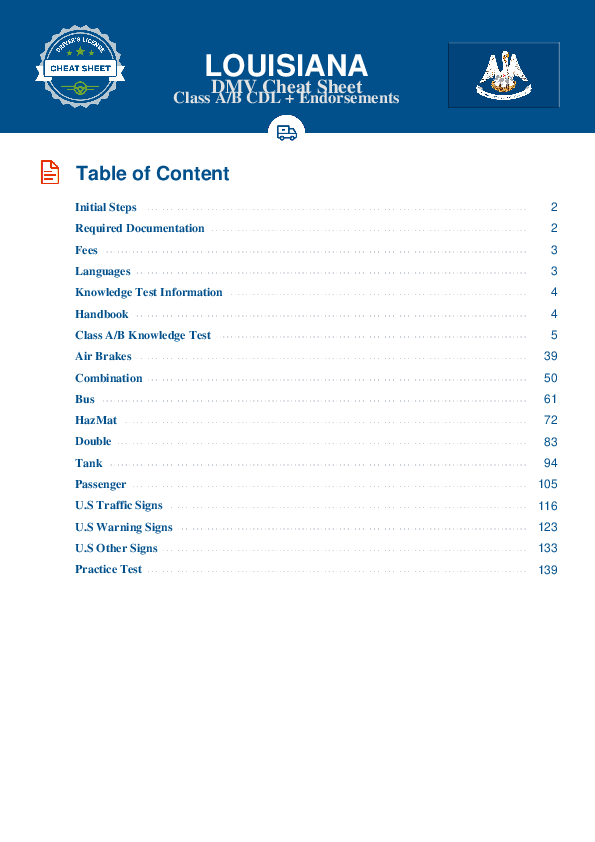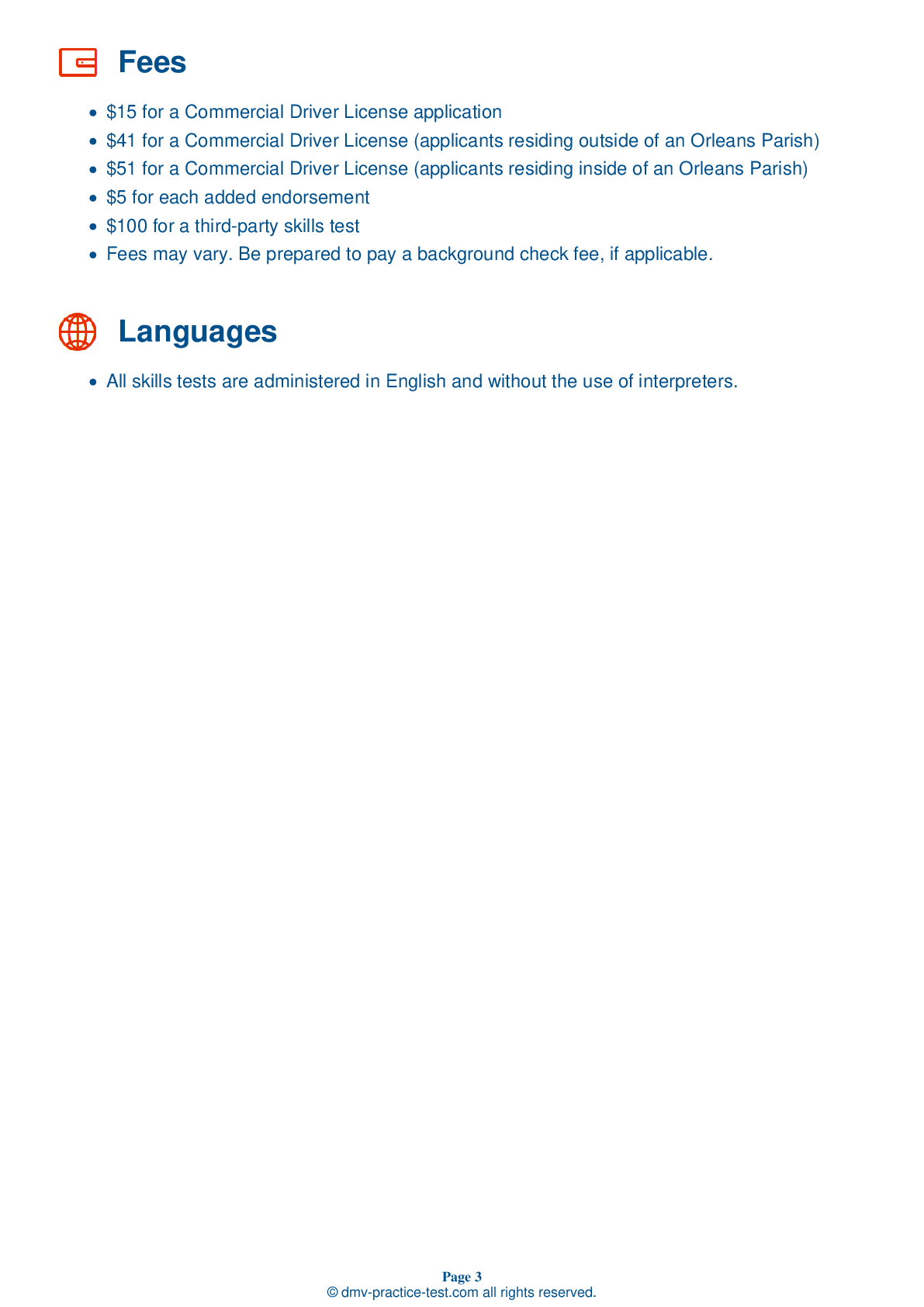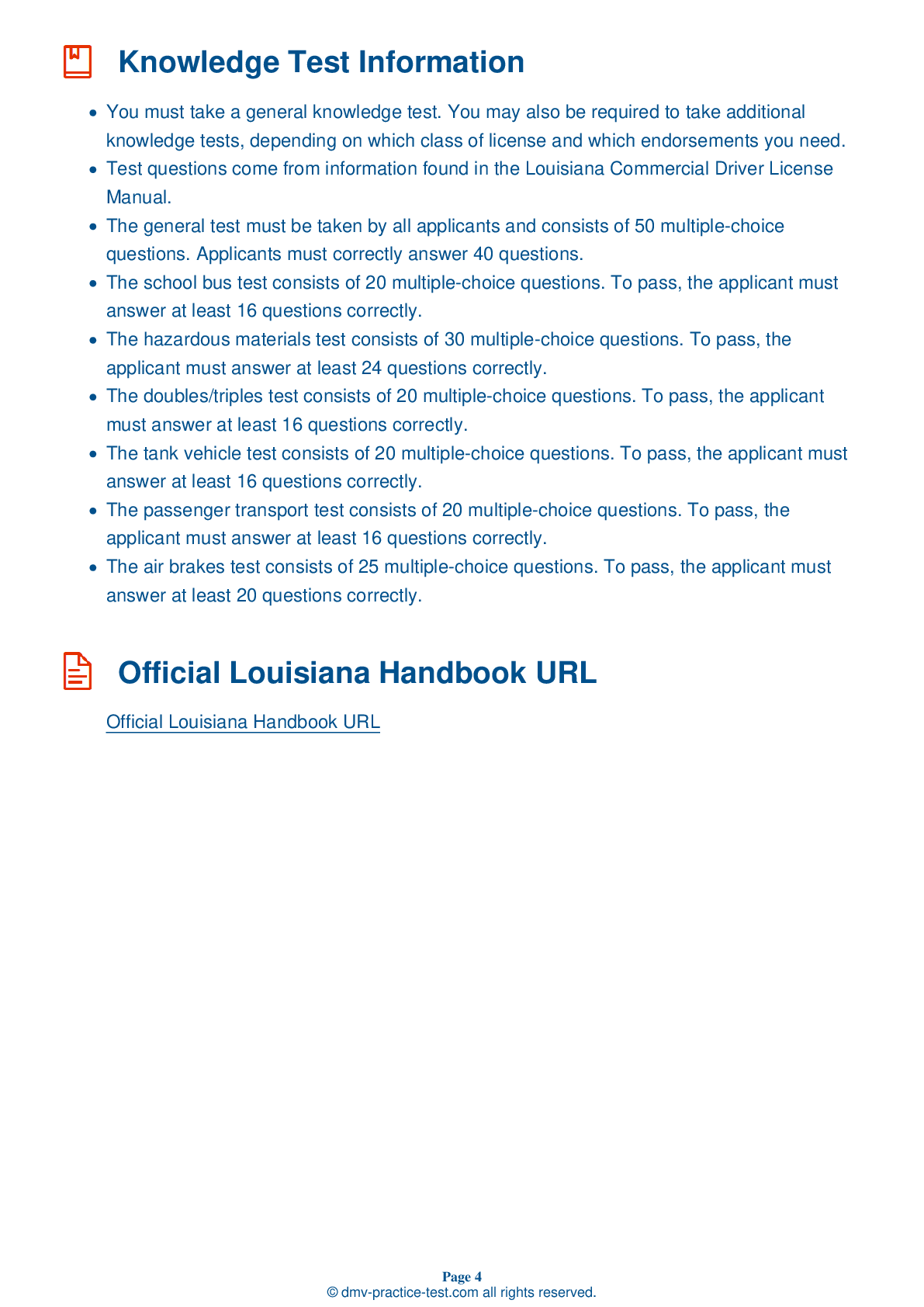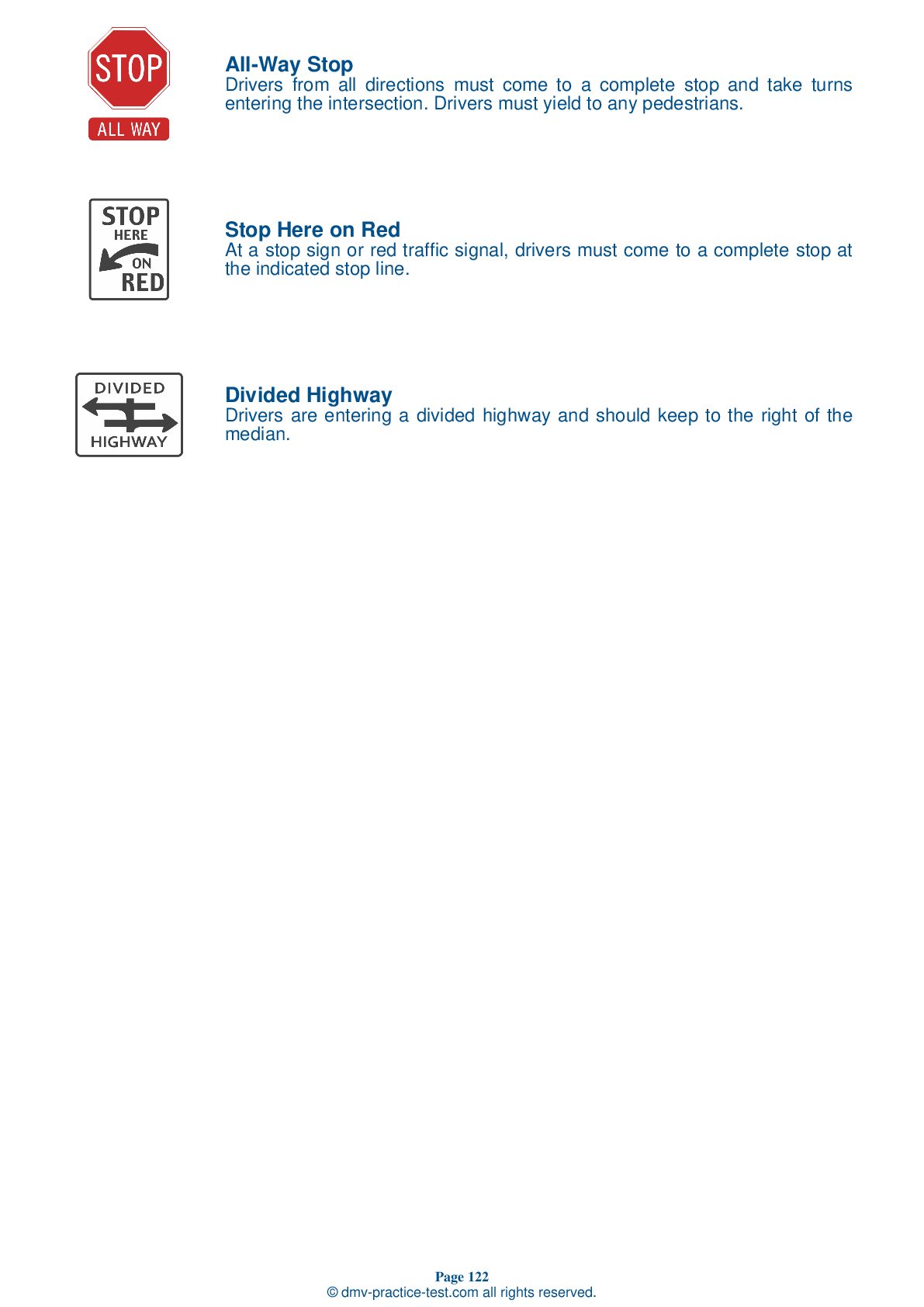Combination #1
Combination Vehicles Practice Test | Louisiana 2025 #1
Train for FREE online with our Louisiana CDL combination vehicle test. The official exam test consists of several obligatory parts, with all of them checking your knowledge of different blocks of road rules. If you need to obtain a LA combination license in 2025, practice as much as possible. Free sample tests published on our website will help you check and improve your knowledge and boost your grades. Please bear in mind that DMV requirements for issuing a combination license may vary from state to state.
20
16
20
1 . The "crack-the-whip" effect can:
Trailers can overturn as a result of the "crack-the-whip" effect. The last trailer in a combination is the most prone to tip over due to this effect. Drivers should be aware of the rearward amplification of their specific vehicles and drive accordingly.
2 . The trailer hand valve:
Never use the trailer hand valve while parking because doing so may release the air pressure from the braking system, releasing the brakes that are holding the vehicle in place. Instead, use the parking brake or wheel chocks.
3 . When testing ____, you should apply your vehicle's brakes with the hand control while moving the vehicle forward slowly.
To test the trailer service brakes, you should first ensure that the braking system has a normal air pressure level, then release the parking brake. You should then move the vehicle forward slowly and apply the brakes with the hand control. If the trailer service brakes are working properly, you will feel the brakes activate.
4 . Older trailers are not equipped with spring brakes. This means that if the air supply for a vehicle's air braking system leaks away:
Older trailers do not have spring brakes. This means that if the air supply in an older trailer's air tank has leaked away, there will be no working brakes connected to the trailer and its wheels will turn freely.
5 . Before a trip, you can make sure air flows to all trailers by:
Before a trip, ensure that air in the air brake system reaches all trailers. Do this by waiting for air pressure to build, then sending air to both the emergency and service lines and opening the shut-off valves on the rear of the last trailer. If air escapes from the shut-off valves in the rear of the combination, the air is being supplied to the entire vehicle.
6 . Combination vehicles are usually:
Driving combination vehicles requires more skill than driving single commercial vehicles. Combinations are generally longer, generally heavier, and are more vulnerable to rollover.
7 . If a load is placed on one side of a trailer, the trailer:
Positioning the weight of a load on one side of a trailer may cause the trailer to lean to that side, increasing the risk of a rollover during turns and lane changes.
2025 Louisiana | Frequently Asked Questions
To acquire a CDL Tank endorsement in Louisiana, you need to pass the tank vehicle test. This involves studying the CDL manual, especially the section on tank vehicles. Then, you must schedule and take the test at your local DMV. Passing the test will add the Tank endorsement to your CDL. Always check with your local DMV for specific requirements.
To obtain a CDL Tank license, you must first have a Commercial Driver's License (CDL). You then need to pass the Tank Vehicle endorsement test. This would require studying the tank vehicle section in the CDL manual. After studying, schedule your test at the local DMV. Passing this test will add the Tank endorsement to your CDL.
While specific training or experience is not legally mandatory for a CDL Tank endorsement, it can be beneficial. Knowledge of handling and operating tank vehicles safely is crucial, and this can be gained through training or experience. However, the key requirement is passing the tank vehicle test after studying the relevant sections in the CDL manual.
Yes, to obtain a CDL Tank endorsement, you must pass an additional written test. The test covers specific knowledge related to the safe transportation of liquid and gaseous materials in tank vehicles. You can prepare for this test by studying the tank vehicle section in your state's Commercial Driver's License manual.
The written test for the CDL Tank endorsement includes subjects related to operating a tank vehicle. Topics include understanding high center of gravity, handling surge, inspecting tank vehicles, and safety considerations. The test aims to ensure drivers can safely handle the unique characteristics of driving a tank vehicle.
The CDL Tank endorsement assessment doesn't involve a specific skills or maneuvers test. It is a written exam that evaluates your knowledge of safely operating tank vehicles. Topics include understanding the vehicle's structure, handling high center of gravity, inspecting tanks, and dealing with surge effects. Practical skills are assessed under the general CDL driving test.
There aren't specific limitations for drivers with a CDL Tank endorsement. However, drivers must comply with federal and state regulations, including hours of service rules, weight limits, and hazardous materials restrictions. Additionally, some employers may have their own rules regarding experience, age, or physical condition. Also, driving under the influence can result in endorsement revocation.
No, a valid CDL Tank endorsement is required to transport liquid or gas materials in the United States. This endorsement ensures that drivers have the necessary knowledge and skills to safely operate tank vehicles and handle potential hazards associated with these types of materials. Driving without the proper endorsement can result in fines or legal action.
The CDL Tank endorsement can be added to your current commercial driver's license. You don't need to apply for a new license. However, you will need to pass the Tank endorsement written test. Once you pass the test, the Tank endorsement will be added to your existing CDL.
Yes, to handle hazardous materials with a CDL Tank endorsement, you must also have a Hazardous Materials (HazMat) endorsement. This requires passing a written test and a TSA background check. Additionally, you must follow the Federal Motor Carrier Safety Administration's safety regulations when transporting hazardous materials.



